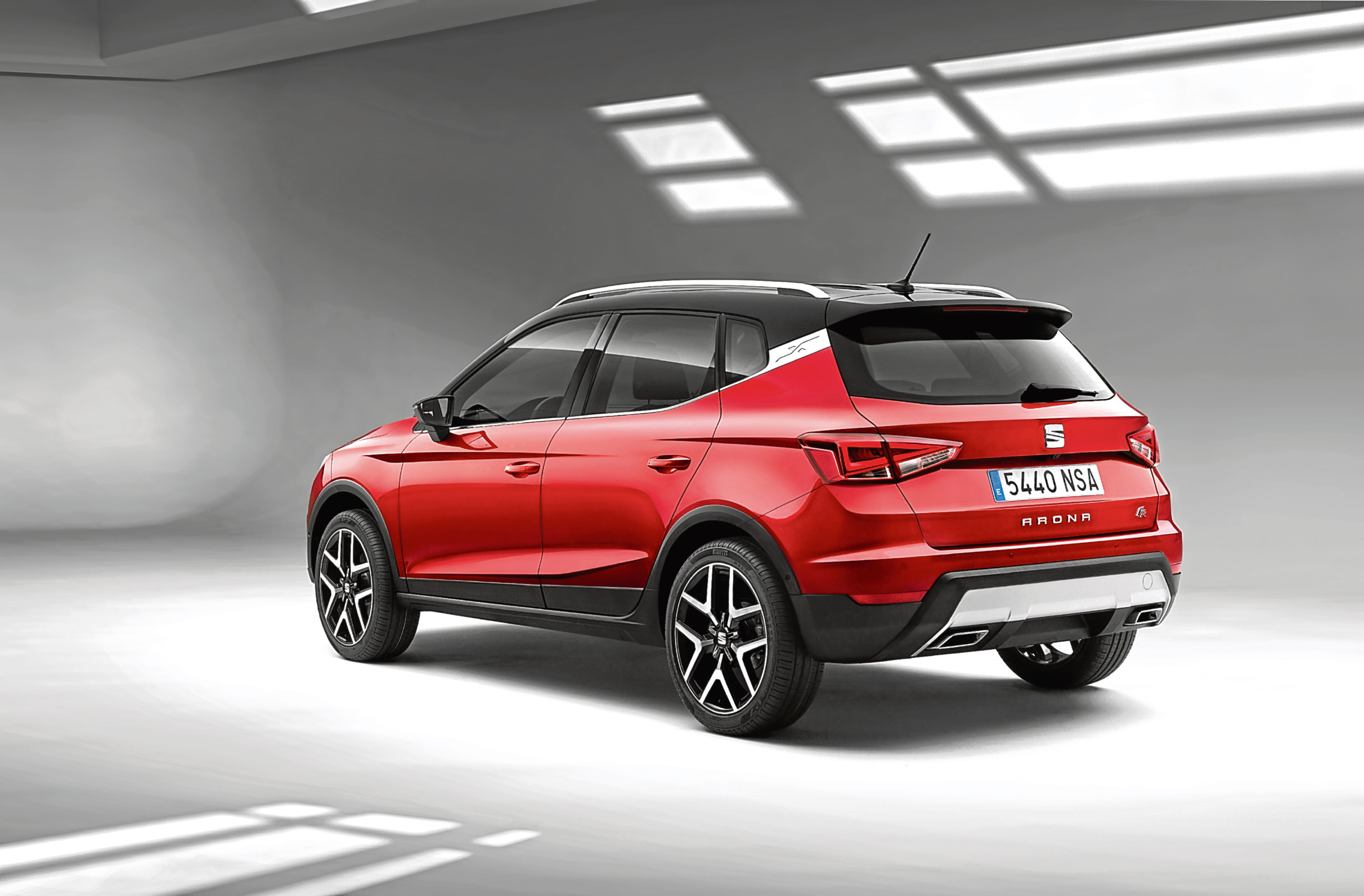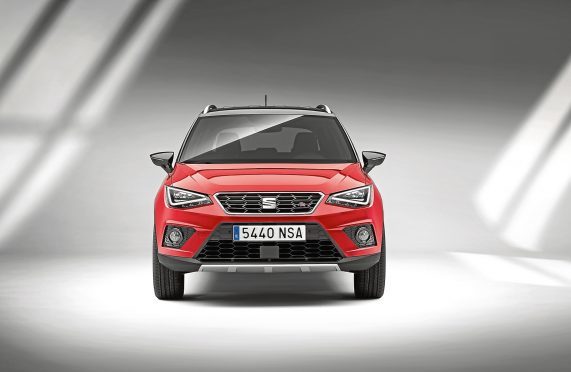Seat’s Arona is a small SUV with an important role to play in the Spanish maker’s model line-up.
The Arona is Seat’s idea of a small sporty SUV and it’s likely to find favour with the increasing number of buyers who would once have simply bought another supermini but now feel the need to get themselves something more interesting and lifestyle-orientated. It’s good-looking, safe, well connected and very personalisable. If this is the kind of car that appeals to you, then an Arona may well tick a lot of boxes.
Seat’s conquest of the SUV segment continues with the Arona. It slots into the Spanish maker’s line-up just below the successful Ateca model, which is based in the running gear of the company’s Leon family hatch. The Arona, in contrast, is a supermini-based crossover, so shares its oily bits with the Barcelona marque’s Ibiza supermini.
This car was developed as part of the €900million investment set aside to create the fifth-generation Ibiza. It targets a compact crossover segment which has increased fourfold in size since 2015 and claims to bring to the sector the ‘sports DNA dynamism’ that Seat hopes characterises its brand.
As expected, the Arona shares the engine line-up used in Seat’s Ibiza supermini, which means that all of the engines on offer have direct injection and a turbo.
There are three different petrol units to choose from, the headline emphasis being on the usual Volkswagen Group three-cylinder 1.0 TSI petrol unit, available in 93bhp form with a five-speed manual gearbox or in 113bhp guise with either a six-speed ‘box or dual-clutch seven-speed DSG auto transmission.
The third petrol choice is a 1.5-litre four-cylinder 147bhp TSI unit with active cylinder deactivation technology, which is exclusive to the FR trim and is connected to a six-speed manual gearbox.
Go for that sporty FR trim and you get dual-mode suspension and the Seat Drive Profile that allows you to alter the steering, throttle response and suspension feel via four modes: Normal, Sport, Eco and ‘Individual’.

As for diesel options, the efficient and reliable 1.6-litre TDI unit is available with 93 and 113bhp. The 93bhp version can be paired with a five-speed manual transmission or a seven-speed DSG auto, and the 113bhp variant with a six-speed gearbox. All Arona models are front-driven: there’s not much appetite in this segment for 4WD.
The Arona sits on the same hi-tech MQB platform that underpins the latest Ibiza supermini and its styling follows the same structure as that used in the brand’s slightly larger Ateca SUV. Here, that model’s three-dimensional look is more pronounced, without being too aggressive.
Like its rivals, this car is trying to give the feel of being a sturdy car for everyday life, hence the strong protection in the bumpers, the wheel arches and the dark-coloured rubber side skirts, as well as the roof rack and the aluminium-look protection at the bottom of the bumpers.
Arona prices start at around £16,500 but expect most variants to sell in the same kind of £18,000 to £24,000 bracket common to the two leading small SUVs, Nissan’s Juke and Renault’s Captur. Trim levels are based around the usual SE, SE Technology, FR, FR Sport, Xcellence and Xcellence Lux options. The Spanish brand knows that the extent to which buyers will be able to personalise the Arona and make it their own will be important.
Colour-wise, the car is divided into two: the lower body on the one hand, and the roof (plus the A- and C-pillars) on the other. The roof can be grey, black, orange or the same colour as the body. Globally, there are 68 colour combinations.
Key equipment features available as options or fitted to plusher models include auto lights and wipers, a Keyless Entry and Start System, a rear camera, an eight-inch black panel centre-dash infotainment touchscreen, a Park Assistance System and a Connectivity Hub which comes with a Wireless Phone Charger and a GSM signal amplifier.
Safety spec will be crucial to sales interest in this car, so the Arona gets all the latest camera-driven tech, including the brand’s Front Assist autonomous braking system, Blind Spot Detection (which stops you from pulling out to overtake when there’s a vehicle in your blind spot) and Rear Traffic Alert (which warns you of approaching vehicles if you’re reversing out from a space). Other features available include Adaptive Cruise Control, Hill Hold control, a Tiredness Recognition System and Multi-Collision Braking.
The headline engine is Seat’s well-regarded 1.0 TSI petrol turbo unit and it should prove to be frugal. Expect the 93bhp version to manage over 55mpg on the combined cycle and under 110g/km of CO2. Obviously, the 1.6-litre TDI diesel will be much better. Expect about 70mpg and about 105g/km. All models get an automatic stop and start system to cut the engine when you don’t need it, stuck in traffic or waiting at the lights.
What else? Well there’s Seat’s usual three-year/60,000 mile warranty. That’s unexceptional when rivals like Toyota and Hyundai offer five years of cover as standard and Kia offers up to seven years. However, the Seat deal is extendable, so you might be able to negotiate on that. And it includes two years of Europe-wide roadside assistance. Seat dealers also offer an It’s Fixed! low-cost servicing programme. To even out the cost of regular maintenance, you can take up fixed price servicing packages for up to three scheduled halts and they go with the car when you sell it if the balance has still to be used.
The Arona, says Seat, is designed for ‘drivers looking for a sense of excitement, distinction and functionality. People who know that age is just a number, not an outlook on life.’ In other words, the people who’ve been busily buying Nissan Jukes and Renault Capturs in considerable numbers over the last five years. The Spanish maker wants in on this lucrative market and this little crossover looks to have everything necessary to entitle them to a useful slice of sales in this segment.
The potential for personalisation will be key to this car’s prospects, as will the efficiency made possible by its engines and light, stiff MQB chassis. It’s taken some time for the Iberian maker to bring us a crossover of this kind but we can see quite a few target Arona customers feeling that the wait has been worthwhile.
Model: Seat Arona
Price: From £18,000
Engine: 1.0-litre petrol turbo
Performance: 0-62mph in 10 seconds, top speed 113mph
Economy: 55mpg
CO2 emissions: 110g/km
